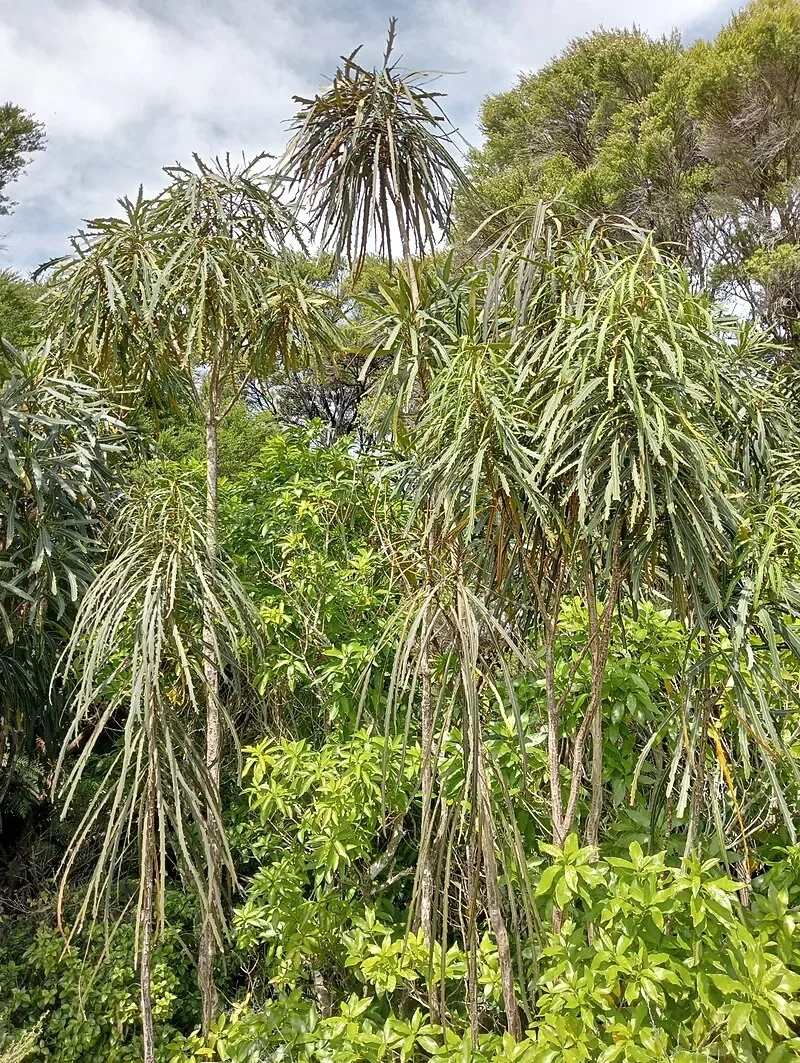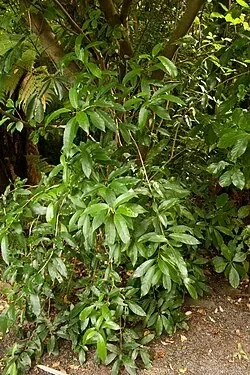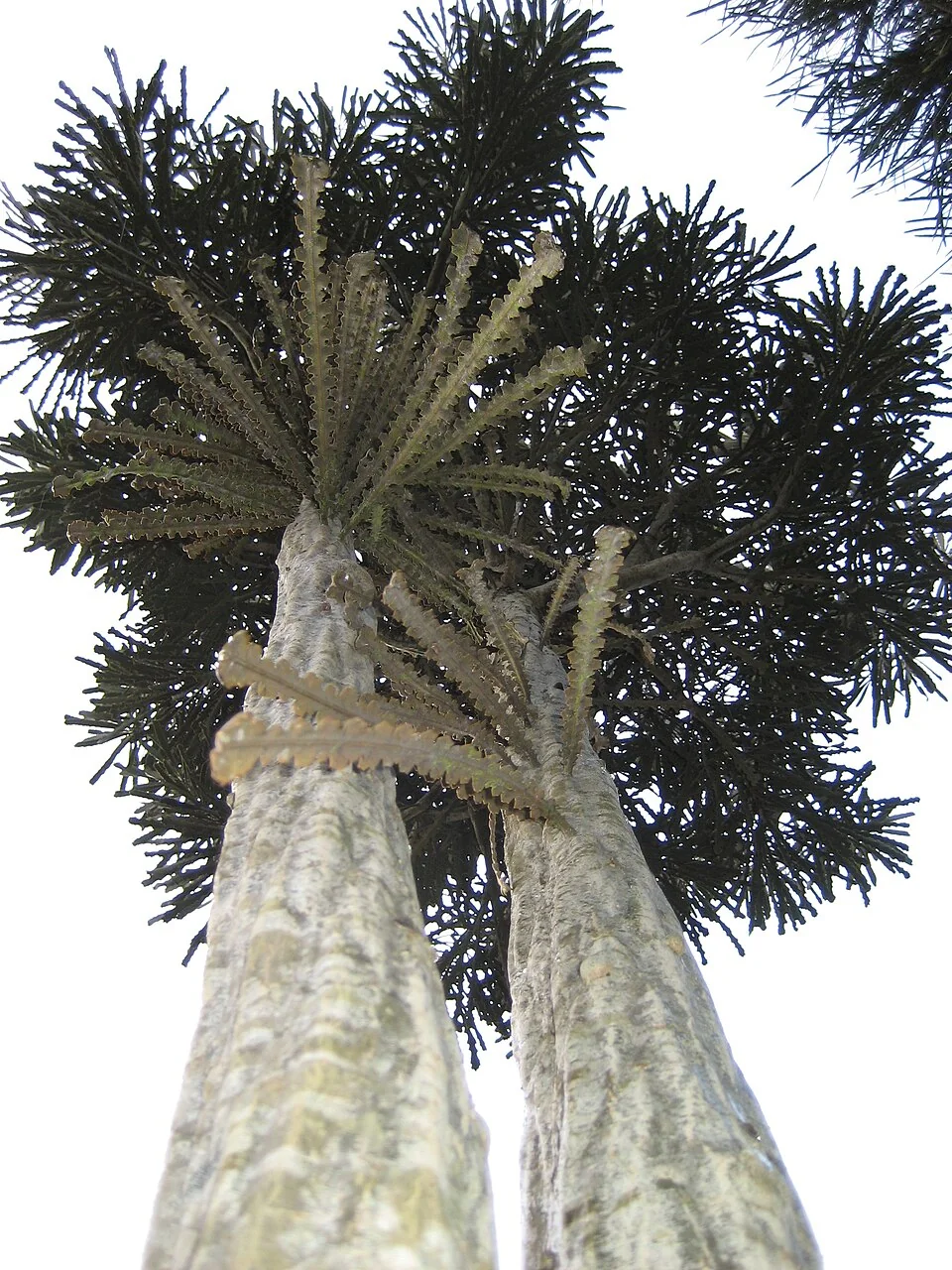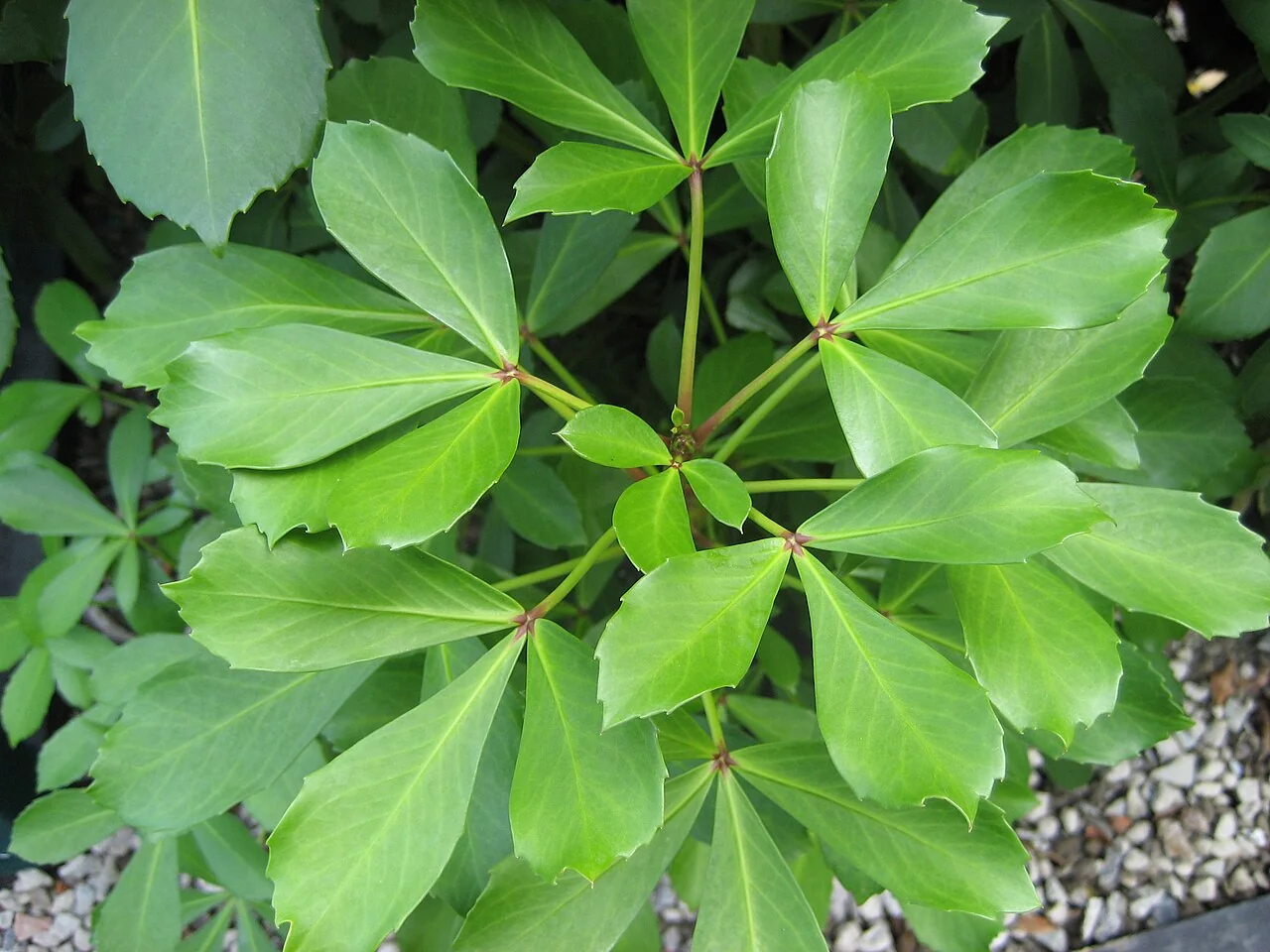
Lancewood
Pseudopanax crassifolius
Introduction
Introduction Overview
Lancewood ( Pseudopanax ) is a unique native New Zealand tree with long, narrow, leathery leaves and a striking juvenile form. It is valued for its unusual appearance and adaptability. native trees and cabbage trees .

Plant Description
Botanical Features
Lancewood ( Pseudopanax crassifolius ), also known as horoeka, is a heteroblastic tree endemic to New Zealand. This means it exhibits distinct changes in leaf form and growth habit throughout its life stages: seedling, juvenile, transitional, and adult. It can grow up to 15 meters tall with a trunk diameter of up to 50 cm. It is found throughout New Zealand from sea level up to approximately 750 meters in lowland to montane shrublands and forests, often in dry, exposed sites, forest margins, or regenerating areas. The juvenile tree is single-stemmed with long, narrow, stiff, and leathery leaves that can be up to 1 meter long and about 1 cm wide. These leaves have a prominent central rib, irregular teeth, and grow downwards from a central stem. The young trunk is slender, unbranched, and features characteristic vertical swollen ridges. The leaves are typically dark green, sometimes with a purple underside, and have a pronounced yellow-orange midrib. As the tree grows beyond 2-5 meters, it begins to branch, and the leaves become shorter and wider, intermediate between juvenile and adult forms. The adult tree develops a multi-branched, rounded crown, giving it a more "typical tree" appearance. Adult leaves are shorter and wider (10-20 cm long by 2-3 cm wide), with a less prominent midrib and either toothed or entire margins. They grow outwards or upwards and have greater frost resistance. The trunk can reach up to 50 cm in diameter, with horizontal lenticels and smooth, grey, or mottled bark. It is dioecious, meaning it has separate male and female plants. It flowers from January to April, producing clusters of tiny light green to pale yellow flowers that are insect-pollinated. These are followed by dark purple fruits when ripe, which are an important food source for native birds. Only mature trees produce fruit.
Quick Facts
Quick Facts Overview
| Scientific Name | Pseudopanax Crassifolius |
|---|---|
| Height | Up to 15 m |
| Spread | 2-4 m (narrow crown) |
| Water Needs | Low to moderate; drought-tolerant once established |
| Light | Full sun to partial shade |
| Frost Tolerance | Moderate (tolerates light to moderate frost) |
| Salt Tolerance | Low to moderate (tolerates some coastal exposure) |
| Growth Rate | Slow to moderate |
| Lifespan | Long-lived (decades to over 100 years) |
Climate Best Suited to
Pseudopanax is native to New Zealand and thrives in the country's diverse climate conditions. It adapts well to various regional climates throughout the country.
Regional Suitability
| City | Climate Suitability |
|---|---|
| Whangārei | Ideal |
| Auckland | Ideal |
| Hamilton | Ideal |
| Tauranga | Ideal |
| Rotorua | Ideal |
| Gisborne | Ideal |
| New Plymouth | Ideal |
| Napier | Ideal |
| Whanganui | Ideal |
| Palmerston North | Ideal |
| Wellington | Ideal |
| Nelson | Ideal |
| Christchurch | Ideal |
| Dunedin | Ideal |
| Invercargill | Ideal |
Natural Habitat
Natural Habitat Overview
Pseudopanax is naturally found in specific habitats throughout New Zealand. Understanding its natural environment helps in providing appropriate growing conditions in cultivation.
Plant Conservation
Conservation
Pseudopanax crassifolius , commonly known as horoeka or lancewood, is a tree endemic to New Zealand. Its conservation status is currently classified as "Not Threatened" by the New Zealand Threat Classification System (NZTCS). Despite its "Not Threatened" status, populations of Pseudopanax crassifolius face threats from introduced mammalian browsers, including possums, deer, and goats. The leaves of the plant, particularly in its juvenile form, are palatable to these animals.
Soil Requirements
Pseudopanax prefers well-draining soil with good organic content. It can adapt to various soil types but performs best in loamy or sandy soils.
Water Needs
Pseudopanax requires moderate watering, especially during establishment. Once established , it becomes more drought-tolerant.
Light Requirements
Pseudopanax grows best in full sun to partial shade, depending on the specific species and local climate conditions.
Temperature
Pseudopanax is well-adapted to New Zealand's temperate climate and can tolerate both warm summers and cool winters.
Planting Guide
When to Plant
Best planted in spring or autumn when soil moisture is reliable and temperatures are mild.
Site Selection
- Choose a site with well-drained soil and full sun to partial shade.
- Allow space for the mature height and spread.
Planting Procedure
- Remove weeds and prepare the soil.
- Dig a hole twice the width of the root ball.
- Plant at the same depth as in the pot.
- Backfill and firm gently.
- Water in well and mulch to retain moisture.
Ecological Value
Wildlife Support
Lancewood (Pseudopanax crassifolius) plays a vital ecological role, providing essential shelter and a crucial food source for native birds and insects. Its unique juvenile form is thought to have evolved as a defense against extinct moa, highlighting its contribution to the ecological diversity of New Zealand's native forests.
Uses and Applications
Practical Applications
Pseudopanax has various practical and ornamental uses. From traditional Māori applications to modern landscaping, this versatile plant serves multiple purposes.
Historically, Pseudopanax was used by Māori for medicinal purposes, food, and cultural practices. These traditional uses reflect the deep knowledge of native plants.
Landscaping Uses
Garden Design
Lancewood (Pseudopanax crassifolius) is an exceptionally striking feature for gardens and public spaces, highly valued for its distinctive architectural form and remarkably low maintenance requirements. Its unique heteroblastic growth, transitioning from a juvenile lance-like stage to a mature branched tree, provides year-round visual interest and makes it a compelling choice for contemporary landscape designs.
Seasonal Care
Spring
New growth emerges; monitor for pests and water young plants as needed.
Summer
Water during dry spells; mulch to retain soil moisture.
Autumn
Remove any dead or damaged leaves; prepare for cooler weather.
Winter
Minimal care required; protect young plants from severe frost if necessary.
Pruning
Pruning Techniques
Lancewood ( Pseudopanax crassifolius ) requires minimal pruning. Remove dead or damaged leaves as needed to maintain a tidy appearance. Avoid cutting into the main stem, as this can damage the plant. Pruning is best done in late winter or early spring before new growth begins. Regular removal of spent flower stalks will help keep the plant looking its best.
How to Grow Lancewood
Lancewood is a unique native New Zealand tree with long, narrow, leathery leaves and a striking juvenile form. It is valued for its unusual appearance and adaptability. This resilient and ecologically important tree adds unique texture and character to any landscape, showcasing the rich biodiversity of New Zealand's forests. Understanding its propagation methods is key to successfully growing this delightful species.
From Seed
Propagating Lancewood from fresh seed is a viable method, though germination can be slow and may require stratification. Collect ripe berries in autumn. Remove the fleshy pulp from the seeds and sow them in a free-draining mix. Germination can be slow and may require stratification (chilling). Maintain consistent moisture in the seed tray and keep it in a warm, sheltered location. Germination can take several weeks to months. Once seedlings have developed a few true leaves, they can be potted into individual containers and grown in a sheltered environment before planting out.
From Cuttings
Vegetative propagation of Lancewood from cuttings is rarely used and can be challenging. Semi-hardwood cuttings may be attempted in late summer, but success rates are generally low. If attempting cuttings, use rooting hormone and maintain consistent humidity and warmth. This method is best suited for experienced propagators or in specialized nurseries for conservation purposes.
Pests and Diseases
Common Pests
Pseudopanax is generally resistant to most pests due to its native adaptations. However, it may occasionally be affected by common garden pests such as aphids or scale insects.
Disease Prevention
To prevent diseases, ensure good air circulation around Pseudopanax and avoid overwatering. Remove any diseased plant material promptly to prevent spread.
Cultural Significance
Cultural Importance
Horoeka Icon
The dramatic juvenile "lancewood" form has inspired art and design and is used widely to represent New Zealand's unique forest adaptations in public gardens and exhibitions.
Pseudopanax crassifolius , commonly known as Lancewood or Horoeka, holds significant cultural importance, particularly for the Māori people of New Zealand. Its unique characteristics and versatility led to various traditional uses and even influenced its English name. The Māori traditionally utilized the tree for several practical purposes: its wood, known for its strength and durability, was used for making weapons, tools, and fishing spears. The flexible wood was also valued for digging sticks. The English name "lancewood" refers to the Māori cultural practice of using the juvenile plant's stems as lances for hunting birds, specifically kererū (native wood pigeons). Māori, particularly from the South Island, crafted paintbrushes for rock art from the leaves of P. crassifolius . The flexible trunks of young trees were fashioned into tokotoko , which are ceremonial walking sticks. The leaves were also used for weaving. Early European settlers found practical uses for the plant as well. The midribs of the juvenile leaves were used as bootlaces and for fixing horse bridles and harnesses. The dense, light brown wood was also used for fence posts or piles. In Māori lore, the flowering of lancewood was an indicator that birds would be plentiful in the following year, as its fruits take a full year to ripen and are an important food source for native birds like whitehead, tūī, and kererū. There is a theory that the unique juvenile form of the Horoeka, with its rigid, saw-like leaves, evolved as a defense mechanism against browsing by the now-extinct giant moa birds. Today, Pseudopanax crassifolius is also a popular ornamental plant in gardens and landscapes, valued for its distinctive foliage and architectural form. It is considered a taonga (treasure) in Māori culture and is protected by the Treaty of Waitangi.
Bonus Tip
Expert Growing Advice
Lancewood ( Pseudopanax crassifolius ) is famous for its dramatic transformation, a phenomenon called heteroblasty. For its first 15 to 20 years, it grows as a single, unbranched stem with long, stiff, downward-pointing leaves. This unique juvenile form is theorized to have evolved as a defense mechanism against browsing by the now-extinct giant moa birds. Once the tree grew tall enough to be out of the moa's reach, it would then transform into its more conventional, branched adult form with shorter, broader leaves.







